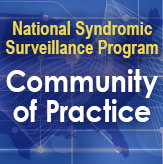Technical Updates

Fall 2022 Software Release
Twice a year, in spring and fall, NSSP schedules major software releases that address features and capabilities recommended by the community, improve system performance, and take advantage of new technologies. The fall release took place in September 2022.
Access & Management Center (AMC) High-level Updates
- Improved Ability to Manage Users—Site administrators can use this alternate, simplified workflow to add users and user groups to data access rules. The additions can be done directly from the Add/Edit User form.
- Improved User Group Report Feature—Site administrators can download user group data to improve their awareness of current data sharing activities and easily track information.
- Improved Master Facility Table (MFT)
- The MFT will display City, State, and ZIP code for Associated Facilities, which site administrators can view on the MFT’s Edit Primary Facility form.
- Site administrators can edit information for Associated Facilities from the Primary Facility Information page.
- Operational Crosswalk Added to MFT—Site administrators can view Operational Crosswalk information on the MFT form for a primary facility.
Data Quality Dashboard
(found in AMC under Edit Primary Facility)
- Top Menu Improvements—Users can change user type and/or connection.
- Expandable/Collapsible Grid Cards—These cards house all data-driven elements of the previous dashboard. Most notably, the data visuals and data tables are in the new grid card format.
- Selected Filters Component Added—This feature is the driving force behind the new Data Quality Dashboard. Users may add or remove data elements to/from the filter to view the desired data.
- New DQ Visuals—Dynamically updated plotting based on user-defined data elements is available and can be modified via the new Selected Filters component.
- Improved Alerts—View logged alerts, comment on, and view history of existing alerts.
- Customized Alerts—Via the Alerts Settings, users may choose from four major data categories (data flow, completeness, validity, and timeliness) and tune their settings to receive alerts that fit specific criteria.
Patching Schedule
- October 18: NSSP vendor patches (Testing and Development) 12:00–8:00 AM ET
- October 20: NSSP vendor patches (Onboarding and Production) 12:00–8:00 AM ET
- November 15: NSSP vendor patches (Testing and Development) 12:00–8:00 AM ET
- November 17: NSSP vendor patches (Onboarding and Production) 12:00–8:00 AM ET
NSSP Presence at ACEP Scientific Assembly
NSSP Lead Karl Soetebier and Health Scientist Lakshmi Radhakrishnan represented NSSP at the annual American College of Emergency Physicians (ACEP) Scientific Assembly, held in San Francisco, CA, October 1–4, 2022.
NSSP is working with ACEP to improve engagement between state and local public health and emergency department clinicians and hospital staff. Clinical information routinely collected by emergency clinicians during healthcare visits forms the backbone of syndromic surveillance. Connecting the two entities—public health with emergency medicine—allows clinicians and hospital staff to see their documentation at work. It also enhances the ability of public health to reliably use surveillance to prompt public health action.
To learn more about NSSP efforts to engage with clinicians and hospital staff, please email nssp@cdc.gov.
Onboarding Updates
The NSSP onboarding team just completed training for its fall New Site Onboarding window. The team hosted 50 new NSSP participants from several California counties and members of four U.S. territories and possessions.
Mortality Update

CDC Lead Data Scientist Dr. Edward Lockhart presented NSSP’s current work with the mortality data source at two venues:
- NSSP Mortality Overview call (hosted by the National Association for Public Health Statistics and Information Systems, NAPHSIS, on June 30, 2022): Dr. Lockhart described how NSSP works with both public health vital records and surveillance communities to integrate mortality data into the BioSense Platform. He gave examples of how public health jurisdictions can leverage their Electronic Death Registration Systems to route mortality data to NSSP, and he extended NSSP’s offer of technical assistance. Approximately 50 people attended, representing 20 public health jurisdictions. Participants from at least five jurisdictions expressed interest in onboarding mortality data.
- NAPHSIS Partner Webinar–STEVE Project (August 17, 2022): NAPHSIS collaborators presented on their successes related to the NSSP–STEVE* project. Dr. Lockhart described how NSSP and sites exchange vital records data with the STEVE system to onboard mortality data for syndromic surveillance. The audience was comprised mostly of jurisdiction vital records program staff.
Currently, seven public health jurisdictions actively submit mortality data to NSSP. Site personnel in these jurisdictions can view their mortality data in the Daily Site Processing Summary Reports. The reports for sites that do not submit data will include this section with a note that mortality data have not been received. NSSP continues to engage with its local and state partners as well as its collaborator NAPHSIS to streamline mortality dataflow from sites to NSSP.
To learn more about onboarding your site’s mortality data, please contact the NSSP at nssp@cdc.gov for assistance.
*STEVE: State and Territorial Exchange of Vital Events
Publication Updates
- Query Development: Community and Technical Resources—A time-saver for sure, this job aid pulls together all aspects of developing a query. It defines the process, explains how to create the query (syndrome definition) from searching ICD codes to consulting others via Slack. The job aid provides scores of resources (articles, guidance documents, and self checks) and instructions for revising queries. First timers who follow this guide will have much more confidence in their final product.
- Ultimate Guide for Site Administrators—This job aid highlights the community’s best practices. It suggests ways to connect with peers and exchange technical solutions quickly. It points to all things NSSP and is guaranteed to jump start your learning about NSSP–ESSENCE. Originally intended for site administrators, this job aid will also help new entrants to syndromic surveillance get acclimated quickly.
- An article has been added to the Onboarding webpage: “When to Use Associated Facilities: Guidance for Site Administrators.” Authored by the NSSP onboarding team, the article explains how associated facilities can function as a single entity so that ESSENCE can display data in a time-series graph.
- A new version of the NSSP Data Dictionary is available in Technical Publications and Standards. This dictionary provides details on data elements stored in NSSP data tables (see update below).
Updates to NSSP Data Dictionary
This NSSP Data Dictionary (see Technical Publications and Standards) provides details on data elements stored in NSSP data tables. This version covers all changes since the last published version, namely, versions 42, 43, and 44.
Briefly, the following changes were made:
- Version 42: Changed Problem_List_Code from 255 to Varchar Max. Note that Mirth is still truncating this data element at 255, so you will continue to observe this limitation until the issue is resolved in Mirth.
- Version 43: New data elements were added to ESSENCE and the ESSENCE Application Programming Interface (API) and Data Details. A new non-informative chief complaint (NICC) term was also added.
- ESSENCE and the ESSENCE API and Data Details:
CRace_CEth_Combined_Narrow
CRace_CEth_Combined_Broad
ICD_Chapter_Flat
ICD_Section_Flat
ICD_Diagnosis_Flat
ICD_CCSR_Flat
ICD_Chapter_Desc_Flat
ICD_Section_Desc_Flat
ICD_Diagnosis_Desc_Flat
ICD_CCSR_Desc_Flat
C_DiagnosisCode_ICD10_Flat - Added new NICC string: CHECK
- Version 44: New data elements were added to ESSENCE, ESSENCE API, and Data Details:
C_DiagnosisCode_ICD9_Flat
C_DiagnosisCode_SNOMED_Flat
DDParsed
CCDDParsed
